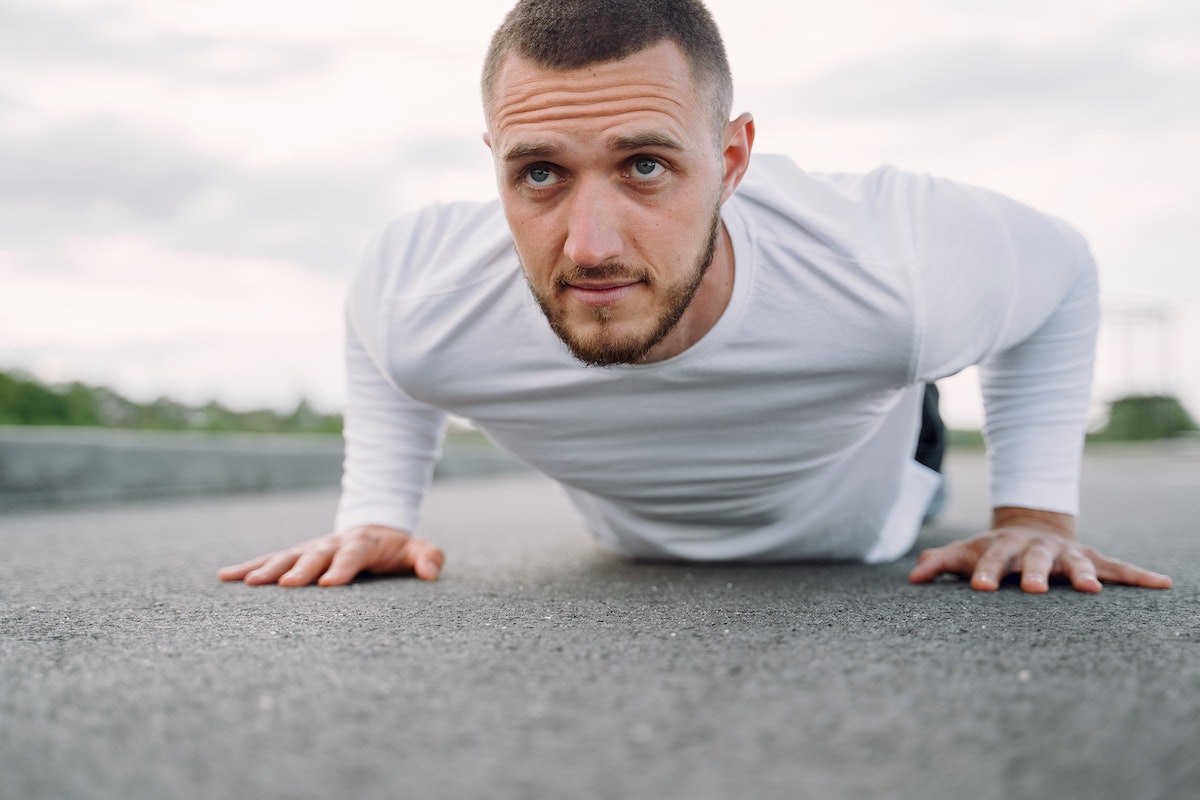
There’s a notion in the running community — particularly long-distance — that strength training is unnecessary. When training for a marathon or ultra and logging 40+ miles weekly, including a 20-mile long run on Sunday, who has time to pick up a set of weights or do some planks?
If a runner is going to pump some iron, surely, any strength day will place a premium on legs, right? After all, it’s the legs carrying you to the finish, right?
Not really. A full-body strength program boosts your running routine and keeps you from getting benched. This program should include a core workout multiple times per week. Surprised? Here’s why you shouldn’t be, plus the best at-home core workout for runners.

How many times a week should runners do core?
Two to four times per week. The strength workout doesn’t simply need to focus on the core. A full-body routine with five to 10 minutes of core will also go a long way for runners.
Core work is essential for runners for several reasons. Notably, core work helps reduce injury risk. No part of your body operates in a vacuum, including the workhorse quads, hamstrings, and calves that take a beating during training. The muscles in your midsection — your abs, obliques, and even glutes — are critical to supporting every step you take. First, you can’t remain upright during a run without your core.
A strong core keeps the pelvis, hips, and lower back working in unison, and that trickles down to the legs. Further, the midsection muscles help a runner maintain this upright, good form even when racking up mileage. This form prevents wobbling, tripping, and overpronating, a trio of culprits that land runners on the sidelines rather than chasing finish lines. Finally, when you have good form, the body doesn’t have to work as hard to move correctly — and the body is already working hard enough during training.

The perfect 5-move at-home core workout for runners
An effective core workout for runners doesn’t involve jazzy equipment, experience, or even a gym membership. A simple beginner core workout using only your body weight will be effective. However, runners may wish to invest in some basic equipment for their home gyms (or backyards). A kettlebell or dumbbell core workout adds resistance, making the moves more challenging and aiding in building full-body strength. This at-home core workout routine incorporates body weight and optional hand weights and kettlebells. The moves are designed for runners of all experiences hoping to level up their training and strengthen their cores.
Single-leg deadlift with optional kettlebell
This kettlebell core workout engages the calves, hamstrings, glutes, posterior core, and upper back, making this versatile move great for the midsection and lower body, too.
- Start by standing with feet parallel and hip-width distance apart.
- Squat down to pick up the kettlebell (this squad helps to prevent back strain).
- Hold the kettlebell in front of you.
- Hinge from the hips, leaning forward as you shift weight to the right side.
- Extend the left leg behind you, engaging the glutes, while keeping a slight bend in the right knee.
- Allow hands to fall straight down as your body assumes a “T” shape. You should feel a stretch in your hamstrings.
- Hold for a count of five.
- Slowly return the left leg to the floor.
- Repeat 10-20 times.
- Switch sides and repeat.
Russian twist with optional dumbell
Though often done with a medicine ball, a Russian twist is also a perfect dumbbell workout for the core. You can also do a Russian twist sans equipment. The move targets the obliques, hips, and shoulders.
- Sit with your feet on the floor in an upright position. The knees should be bent. (To advance this move, pick your feet off the floor.)
- Hold the dumbbell in front of you, slightly below the chest.
- Move into a V shape by leaning back to form a 45-degree angle with your spine.
- Engage the belly button into the spine. Use the torso to twist to the right side.
- Come back to the center.
- Twist to the left side.
- Repeat 30 times.
Kettlebell swing
Another kettlebell workout for runners, the swing requires control and precision. In addition to the core, the exercise engages the hamstrings, glutes, hips, quadriceps, lats, deltoids, triceps, and biceps — the kettlebell swing epitomizes a “full body workout,” for sure. What’s more, the explosive nature of the kettlebell swing can also get the heart pumping, serving as an excellent way to log cardio or add to a HIIT workout. Slow and steady wins the race here. Refrain from free swinging the kettlebell, which can reduce the effectiveness of the exercise and increase your risk of back injury.
- Stand with feet shoulder-width apart and parallel.
- Grip the kettlebell so your palms face you. The kettlebell should be placed in front of you. The arms should be straight down.
- Hinge at your hips and bend the knees slightly as you bring the kettlebell between your legs.
- Engage the glutes and hips and drive through the heels to explosively swing the kettlebell up toward the chest. Aim for the kettlebell to end at shoulder height, parallel to the floor, but listen to your body. Don’t force the move. You’ll improve with time.
- Lower the kettlebell between your legs slowly and use your hips, not overly engaging the shoulders. Keep the knees bent.
- Repeat for 20-30 reps or for a time that feels challenging but not painful to you.
Bridge
The bridge is often thought of as part of a leg workout — and the exercise certainly is a hallmark of lower-body day. However, a bridge is also a fantastic beginner core workout. Frankly, the pose is excellent for runners of all stages because it engages the rectus abdominis and obliques, which have to work to stabilize the body during the move.
- Lie on your back with knees bent and feet hip-width distance apart. Arms should be extended with palms facing down.
- Root down in the hands and feet as you push your hips up. Squeeze the glutes.
- Hold for 10-20 seconds.
- Lower back to the floor slowly, one vertebrae at a time.
- Repeat 10-20 times.
Superman
Another great bodyweight exercise that’s beginner-friendly, superman works the lower back, abs, glutes, hamstrings, and upper back.
- Lie on a mat, stomach down.
- Ensure your hands, legs, arms, and feet are all on the mat. Keeping them flat and grounded, extend them in front of you.
- Squeeze the core and glute muscles to engage them and stabilize the torso.
- In unison, lift the arms, chest, legs, and torso off the floor.
- Hold for 5-10 seconds.
- Lower down.
- Repeat 10 times.
If you’re concerned about your form or have questions, speaking with a personal trainer can help get you started. Always consult a doctor before beginning any new workout program. Certain conditions, like diastasis recti, may require additional modifications and support.



